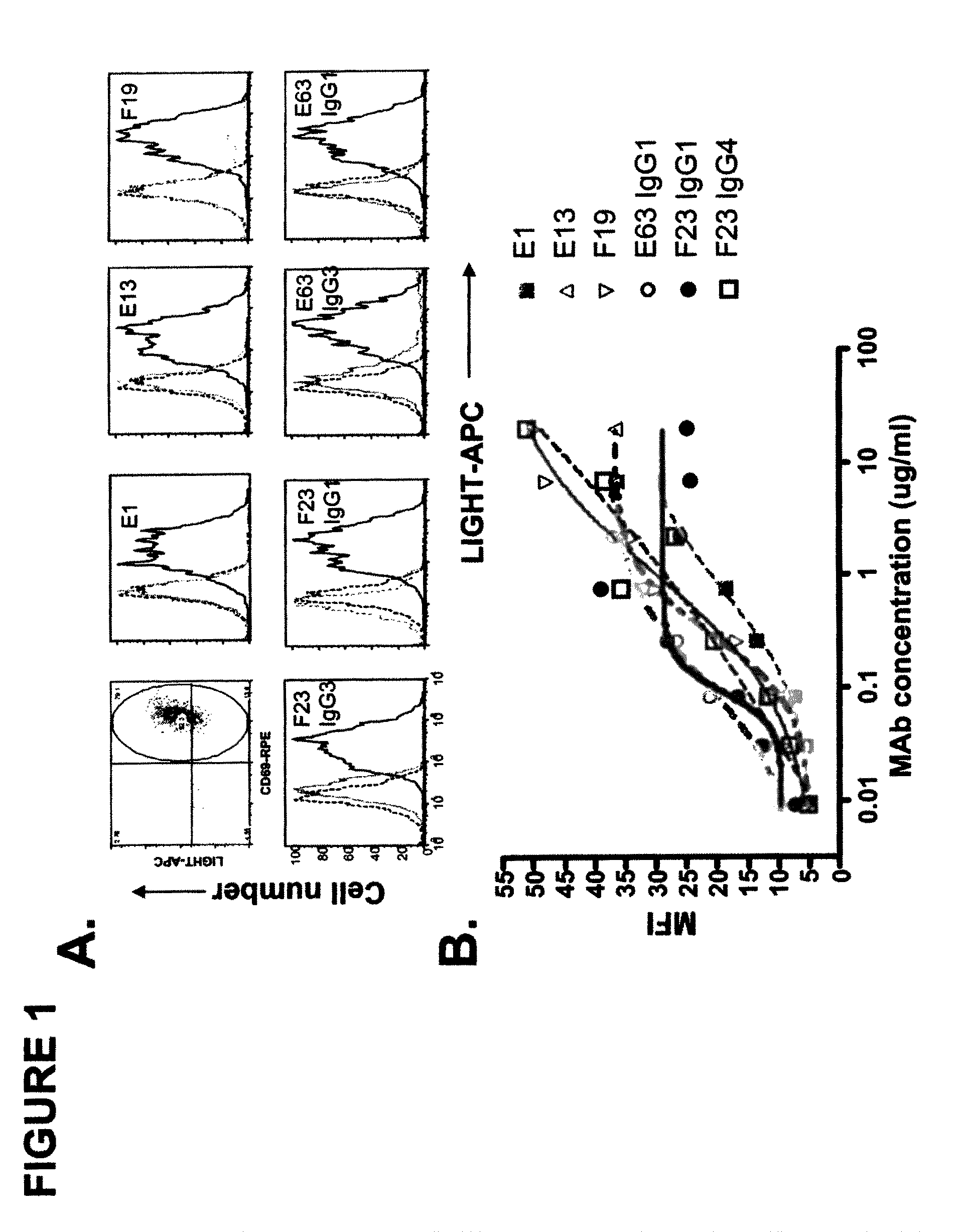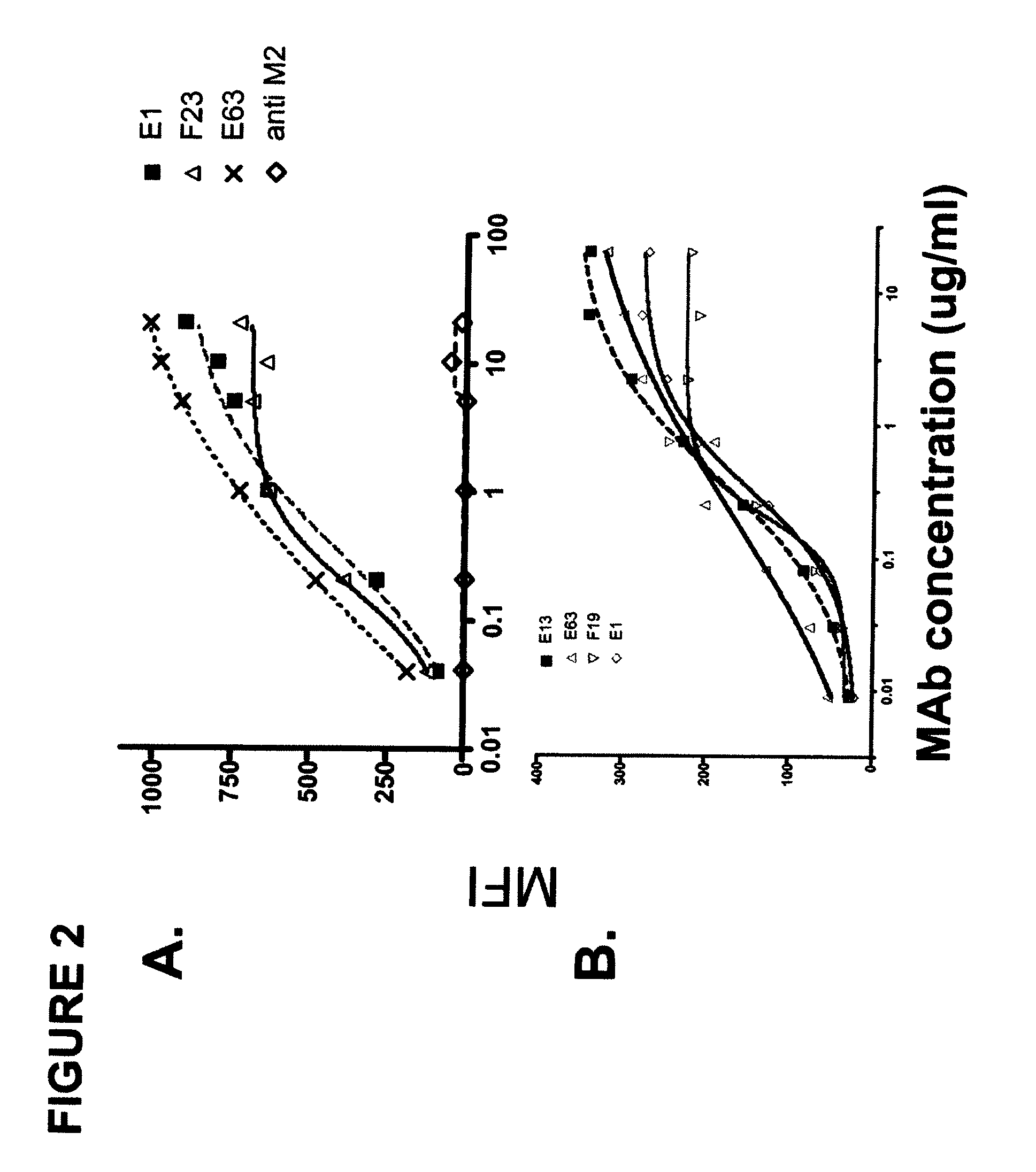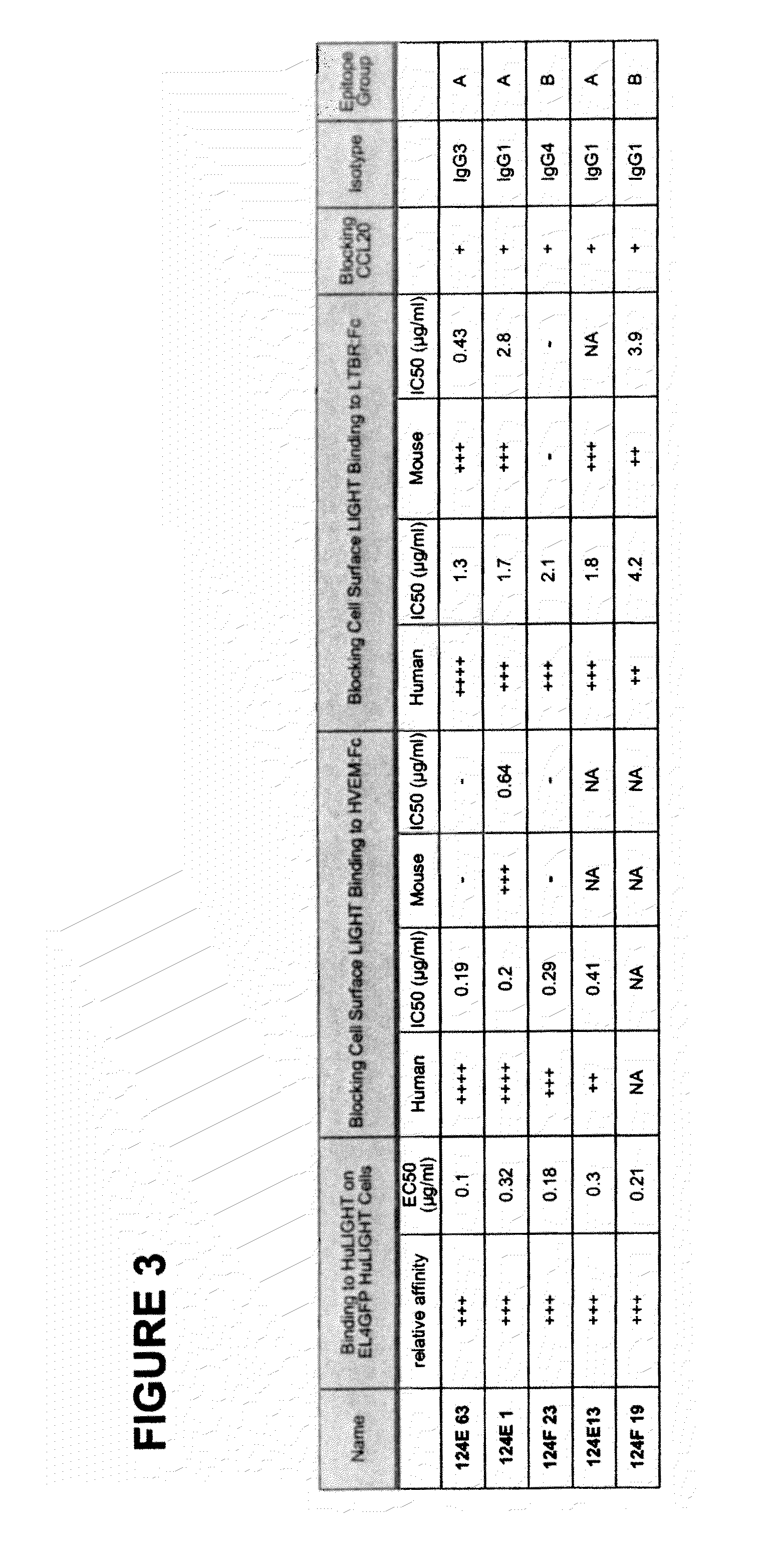Antagonistic human LIGHT-specific human monoclonal antibodies
- Summary
- Abstract
- Description
- Claims
- Application Information
AI Technical Summary
Benefits of technology
Problems solved by technology
Method used
Image
Examples
example 1
Generation of Human Anti-hLIGHT Antibodies
[0369]In this example, the generation of human anti-hLIGHT monoclonal antibodies using transchromosomal mice (KM Mice™) (WO 02 / 43478, WO 02 / 092812, Ishida and Lonberg, IBC's 11th Antibody Engineering Meeting. Abstract (2000); and Kataoka, S. IBC's 13th Antibody Engineering Meeting. Abstract (2002)) immunized with soluble recombinant hLIGHT is described. The antibodies described here specifically stained hLIGHT stably transfected cell lines, (EL4-hLIGHT and HEK 293-hLIGHT) and not the parental cell lines. Likewise, they bind to endogenously expressed hLIGHT on the surface of the human T cell hybridoma (II-23.D7) (Ware et al. 1986 Lymphokine Res 5 313-24) upon activation. Together, these data indicate that the antibodies immunospecifically bind to hLIGHT. The isolated antibodies recognize one of two epitopes on hLIGHT as determined by cross-blocking experiments, as described below. Moreover, the antibodies were able to block cell surface-expre...
example 2
Characterization of Commercially Available Mouse Anti-Human Monoclonal Antibodies
[0475]Antibody cross-blocking. Cross-blocking experiments were conducted as described in Example 1 using mouse anti-hLIGHT monoclonal antibodies available from R&D Systems (“R&D mouse mAb”) and Abnova (“Abnova mouse mAb”), as well as the human anti-hLIGHT monoclonal antibodies identified in Example 1, to assess which hLIGHT epitope that the antibodies bind. Results are presented in FIG. 11.
[0476]The results show that the R&D mouse mAb binds to the same epitope as the human E1, E13, and E63 monoclonal antibodies (“human E antibodies”), as well as the same epitope as the human F19 and F23 monoclonal antibodies (“human F antibodies”). Thus, in contrast to the human anti-hLIGHT E & F monoclonal antibodies identified in Example 1, which were found to immunospecifically bind to only one of two distinct epitopes, the R&D mouse mAb binds to both hLIGHT epitope groups. That is, the human E antibodies and the hum...
example 3
Characterization of Kappa Chains of F19 and E1 Human Anti-hLIGHT Antibodies
[0487]The procedures discussed in Example 1 were used to find a preferred kappa chain—heavy chain pair of the antibodies produced by the E1 and F19 hybridomas. Based on the results of these experiments, it was shown that E1kappa(B) (SEQ NO:6) is the preferred kappa light chain of the hLIGHT antibodies produced by the E1 hybridoma, and F19kappa(B) (SEQ ID NO:9) is the preferred kappa light chain of the hLIGHT antibodies produced by the F19 hybridoma.
[0488]Recombinant single kappa chain antibodies were generated by transient transfection of mammalian expression vectors containing the heavy chain genes paired with each of the individual kappa chain genes that existed in the parental hybridoma cells. This material was then tested in parallel with the purified antibodies generated from the respective parental hybridomas.
[0489]Antibody binding assays were performed as described in Example 1. The kappa chain—heavy c...
PUM
| Property | Measurement | Unit |
|---|---|---|
| Volume | aaaaa | aaaaa |
| Fraction | aaaaa | aaaaa |
| Power | aaaaa | aaaaa |
Abstract
Description
Claims
Application Information
 Login to View More
Login to View More - R&D
- Intellectual Property
- Life Sciences
- Materials
- Tech Scout
- Unparalleled Data Quality
- Higher Quality Content
- 60% Fewer Hallucinations
Browse by: Latest US Patents, China's latest patents, Technical Efficacy Thesaurus, Application Domain, Technology Topic, Popular Technical Reports.
© 2025 PatSnap. All rights reserved.Legal|Privacy policy|Modern Slavery Act Transparency Statement|Sitemap|About US| Contact US: help@patsnap.com



